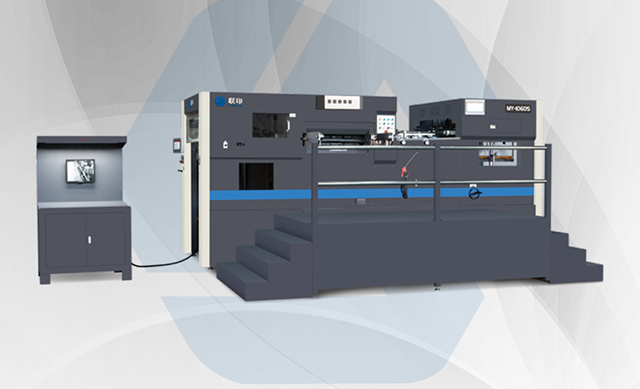How Fully automatic deep embossing machines Improve Packaging Quality
In today’s competitive packaging industry, product appearance and quality are key differentiators. Fully automatic deep embossing machines enable manufacturers to produce high-quality, visually appealing, and durable packaging. By integrating automation, precision, and advanced controls, these machines reduce human error, improve efficiency, and enhance the overall quality of embossed designs. This guide explores the certification standards, operational workflow, troubleshooting techniques, and maintenance procedures for these machines.
Fully automatic deep embossing machines must comply with international and industry-specific standards to ensure safety, reliability, and quality performance.
| Certification | Purpose |
|---|---|
| CE (Conformité Européenne) | Confirms compliance with European safety, health, and environmental standards |
| ISO 9001 | Ensures quality management systems are in place for consistent production |
| UL Certification | Verifies electrical safety and reduces the risk of malfunctions |
| RoHS Compliance | Guarantees that the machine is free from hazardous substances |
Safety assurance for operators
Reliability in high-volume production
Compliance with export regulations
Enhanced brand credibility for manufacturers
Manufacturers should always verify certification status before investing in embossing equipment to ensure safe, compliant, and efficient operations.
Understanding the operational workflow of fully automatic deep embossing machines ensures consistent quality and efficient production.
Inspect machine components for wear and alignment
Confirm die plates and embossing templates are correctly installed
Verify power supply and emergency stop functions
Material Feeding: Automated rollers feed the substrate into the embossing area
Alignment and Positioning: Sensors ensure correct placement for precision embossing
Embossing Stage: High-pressure embossing stamps the design onto the material
Die-Cutting (Optional): Integrated die-cutting removes excess material for shaped products
Waste Stripping: Scrap material is automatically separated for recycling
Power down and clean the machine
Remove leftover scraps and inspect die plates and rollers
Log production metrics for quality control
| Step | Description | Key Considerations |
|---|---|---|
| Pre-Operation | Inspect components | Ensure die alignment, safety, and cleanliness |
| Feeding | Automated substrate feed | Prevent misalignment or jams |
| Embossing | Deep stamping | Maintain consistent pressure and temperature |
| Die-Cutting | Optional cutting stage | Avoid material wastage |
| Waste Stripping | Scrap separation | Ensure clean operation for next batch |
Even high-precision machines can encounter operational issues. Timely troubleshooting ensures minimal downtime and consistent packaging quality.
Uneven embossing depth
Misaligned die-cutting
Material jams or feeding errors
Electrical or sensor malfunctions
Uneven Embossing: Check roller alignment and die plate condition
Misaligned Die-Cutting: Calibrate positioning sensors and ensure correct feed settings
Material Jams: Inspect feeding rollers and remove obstructions
Electrical Errors: Reset PLC system and verify wiring connections
Maintaining a troubleshooting log helps operators track recurring issues and implement preventive measures.

Regular maintenance and detection are critical for prolonging machine life, ensuring operational safety, and maintaining high-quality output.
| Frequency | Task |
|---|---|
| Daily | Clean machine surface, remove scraps, inspect safety guards |
| Weekly | Lubricate moving parts, check roller alignment, inspect sensors |
| Monthly | Test electrical components, calibrate pressure settings, inspect die plates |
| Quarterly | Full system inspection, replace worn parts, update software |
Visual Inspections: Identify wear, cracks, or misalignment
Pressure Testing: Ensure embossing force is uniform
Sensor Calibration: Confirm accurate alignment for die-cutting
Electrical Diagnostics: Detect wiring or PLC faults before failures
Keep a maintenance log to track inspections and repairs
Train operators on safety and maintenance procedures
Use manufacturer-approved lubricants and spare parts
Schedule regular professional servicing for complex components
Fully automatic deep embossing machines enhance packaging quality in multiple ways:
Uniform embossing depth
Accurate alignment of die-cut shapes
Reduced human error
High-speed operation for large-scale production
Reduced downtime through automated feeding and waste stripping
Minimized scrap material
Lower labor costs due to automation
High-quality embossed designs improve product appeal
Supports premium packaging for luxury goods
| Advantage | Impact on Packaging Quality |
|---|---|
| Precision | Consistent embossing, reduced defects |
| Efficiency | Faster production, higher throughput |
| Waste Reduction | Lower material costs, environmentally friendly |
| Aesthetic Enhancement | Attractive, professional packaging |
Fully automatic deep embossing machines are essential tools for modern packaging manufacturers. By following certification standards, operational workflows, troubleshooting guides, and maintenance protocols, manufacturers can achieve:
Superior embossed designs
Consistent die-cut precision
Reduced material waste
Increased operational efficiency
Enhanced product appeal and brand value
Investing in these machines not only improves packaging quality but also contributes to cost savings, safety, and long-term manufacturing excellence.
This website uses cookies to ensure you get the best experience on our website.
Comment
(0)